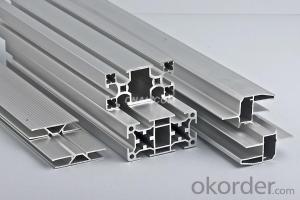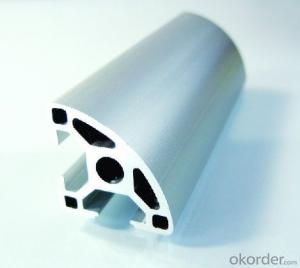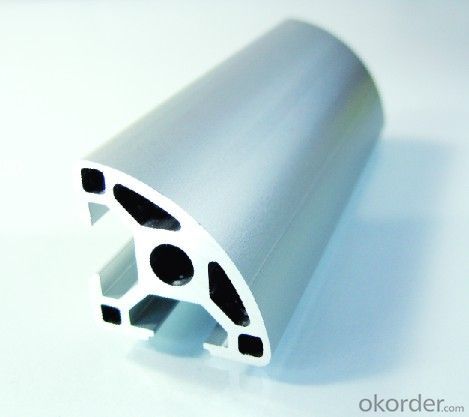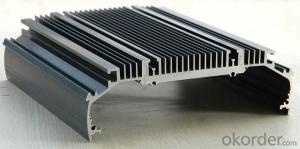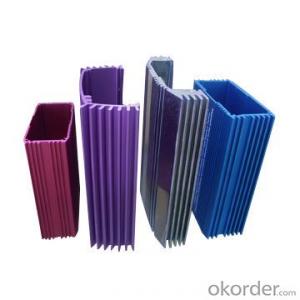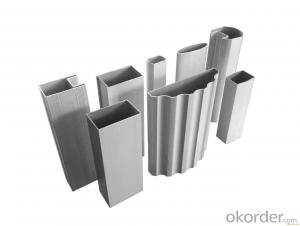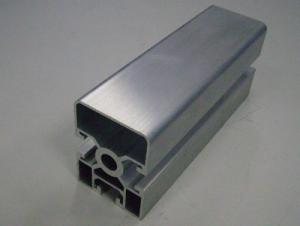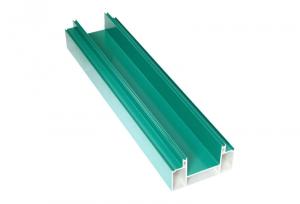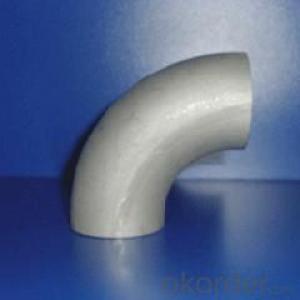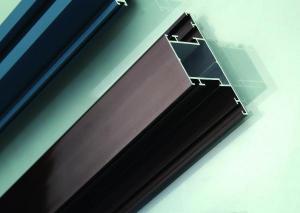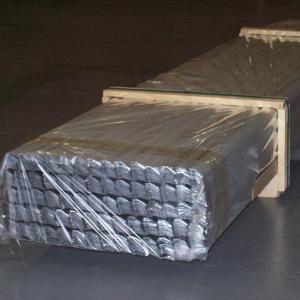Aluminum Door Profiles - Cheaper Aluminium Profile Extrusion
OKorder Service Pledge
OKorder Financial Service
You Might Also Like
Aluminium is a relatively soft, durable, lightweight, ductileand malleablemetalwith appearance ranging from silvery to dull gray, depending on the surfaceroughness. It is nonmagnetic and does not easily ignite. A fresh film ofaluminium serves as a good reflector (approximately 92%) of visible lightand an excellent reflector (as much as 98%) of medium and far infraredradiation. The yield strength of pure aluminium is 7–11 MPa,while aluminium alloys have yield strengths ranging from200 MPa to 600 MPa. Aluminium has about one-third the densityand stiffness of steel. It is easily machined,cast, drawn and extruded.
Features:
Material | Alloy 6063,6061,6005or according to customer’s choice |
Temper | T3, T4, T5, T6 |
Surface | Anodize, electrophoresis, powder coating, PVDF coating, wood grain painting, matted, etc. |
Length | Coating 6.5 meters, Anodizing 6.5 meters, Mill finish 5 meters |
Application | Industrial, electrical equipment(TV set, air conditioner, refrigerator, computer), decoration,construction, transportation |
Custom Made | We can package following with customer's request. |
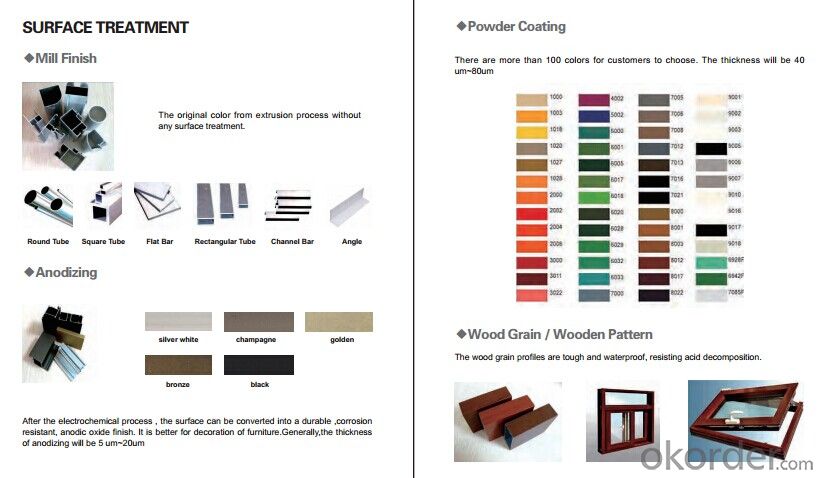



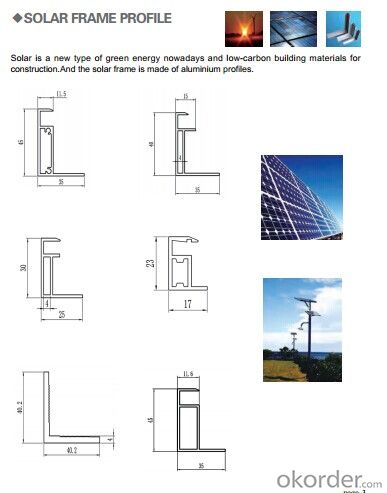
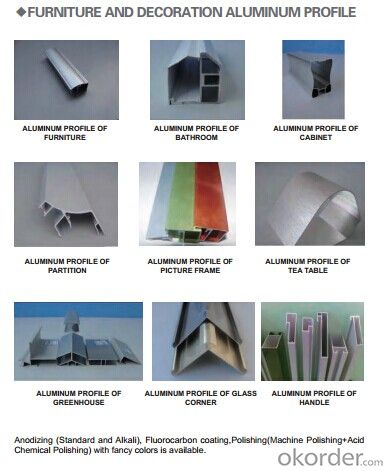
- Q: T6 should be 140MPa, while the aluminum profile specification should be 150MPa. Should that be the standard?Code for design of glass curtain wall... And the calculation formula of bolt connection, what is the compressive strength value of aluminum profile?Prawns help you, 3Q~
- In this case, not only is the bending deformation produced by tensile stress, it is a large part of the moment and shear, in a large error.
- Q: Are aluminum profiles suitable for outdoor furniture and fences?
- <p>Yes, aluminum profiles are commonly used for outdoor furniture and fences due to their durability, resistance to corrosion, and low maintenance requirements. Aluminum doesn't rust like iron or steel, making it ideal for outdoor applications where exposure to weather elements is constant. It also retains its structural integrity over time and can be easily powder-coated or anodized for added protection and aesthetic appeal.</p>
- Q: What are the thermal properties of aluminum profiles?
- Aluminum profiles have excellent thermal properties. They have high thermal conductivity, allowing heat to be transferred quickly and efficiently. They also have a low coefficient of thermal expansion, meaning they can withstand temperature changes without significant distortion or damage. Additionally, aluminum profiles have good heat dissipation capabilities, making them suitable for applications requiring heat management, such as in electronic devices or heat sinks.
- Q: 80 series insulation aluminum broken bridge 1.4 thick, one square kilogram, how many kilograms aluminum material?
- Each brand of profiles, aluminum weight is not the same, but within the unit area is about 8 kilograms, little difference
- Q: This question asks about the various finishing options that can be applied to aluminum profiles.
- <p>Aluminum profiles can be finished in several ways to enhance their appearance and durability. Common types of finishes include: 1. Anodizing, which provides a protective oxide layer and can be colored. 2. Powder coating, a durable and customizable finish that offers a wide range of colors and textures. 3. Electrophoretic coating, which results in a smooth, even finish and is often used for automotive parts. 4. Polishing, which can produce a mirror-like finish. 5. Brushing, which creates a鍝戝厜 texture with a satin-like appearance. 6. Painting, which can be done with solvent-based or water-based paints for a variety of color options. 7. Wood grain transfer, which gives aluminum profiles the appearance of wood. Each finish has its own advantages and is chosen based on the specific application and aesthetic requirements.</p>
- Q: Are there various ways to install aluminum profiles?
- <p>Yes, aluminum profiles can be installed using different methods. Common installation techniques include direct fastening with screws or bolts, using adhesives or sealants, and employing clip or channel systems. The choice of method depends on the specific application, load-bearing requirements, and aesthetic considerations. Some methods may provide quicker installation, while others might offer better structural integrity or visual appeal. It's important to consult with a professional or follow manufacturer guidelines to ensure the proper installation method is used for the intended application.</p>
- Q: What are the bending capabilities of aluminum profiles?
- Aluminum profiles have excellent bending capabilities due to their inherent properties. Aluminum is a highly malleable metal, which means it can easily be formed into various shapes without fracturing or breaking. This makes it ideal for applications that require complex bending or curving. The bending capabilities of aluminum profiles largely depend on the alloy used and the specific shape or design being bent. Certain aluminum alloys, such as 6061 or 6063, are commonly used for extruded profiles and offer excellent bending properties. These alloys have a good balance of strength and formability, making them well-suited for bending applications. The bending process for aluminum profiles typically involves using specialized machinery, such as a bending machine or a press brake. The profile is carefully positioned and clamped, and then pressure is applied to bend it to the desired shape. The process can be done in multiple passes to achieve tight or gradual bends. Aluminum profiles can be bent to various angles, including sharp bends or gentle curves, depending on the application requirements. The bending radius, or the minimum radius that the profile can be bent without causing deformation, depends on the profile's thickness, alloy, and temper. Thinner profiles generally have smaller bending radii compared to thicker ones. It is important to note that excessive bending or bending beyond the material's capabilities can lead to cracking or permanent deformation. Therefore, it is crucial to consider the specific bending requirements and consult with experts or manufacturers to ensure proper bending techniques and limitations are followed. Overall, aluminum profiles offer excellent bending capabilities, allowing for the creation of intricate and custom shapes. Their versatility and formability make them a popular choice in industries such as construction, automotive, aerospace, and furniture manufacturing.
- Q: Can aluminum profiles be used in the construction industry?
- Yes, aluminum profiles can be used in the construction industry. Aluminum profiles are lightweight, durable, and corrosion-resistant, making them suitable for various construction applications. They are commonly used in the fabrication of windows, doors, curtain walls, and structural framing systems. Aluminum profiles offer excellent strength-to-weight ratio, allowing for the creation of large and intricate structures while minimizing the overall weight. Additionally, they can be easily formed into different shapes and sizes, providing flexibility in design and construction. The thermal conductivity of aluminum profiles is also advantageous, as it allows for efficient insulation and energy savings. Overall, aluminum profiles are a popular choice in the construction industry due to their versatility, durability, and aesthetic appeal.
- Q: Can aluminum profiles be used in aerospace applications?
- Yes, aluminum profiles can be used in aerospace applications. Aluminum has been widely used in the aerospace industry for many years due to its various advantageous properties. Aluminum profiles are lightweight, which is crucial in aerospace applications as it helps reduce the overall weight of the aircraft, resulting in improved fuel efficiency and increased payload capacity. Additionally, aluminum profiles possess high strength-to-weight ratio, making them strong enough to withstand the stress and forces experienced during flight. Aluminum is also corrosion-resistant, which is beneficial in the harsh and corrosive environment of aerospace. Furthermore, aluminum profiles can be easily machined and formed into complex shapes, allowing for greater design flexibility. Overall, the combination of lightweight, strength, corrosion resistance, and ease of fabrication makes aluminum profiles an excellent choice for various aerospace applications such as aircraft frames, wings, fuselages, and structural components.
- Q: This question asks for a list of various aluminum profiles that are specifically designed or used for roofing systems in regions with cold climates.
- <p>In cold climates, aluminum profiles for roofing systems are selected for their durability, strength, and resistance to harsh weather conditions. Common types include: 1. Standing Seam Profiles: These are popular for their weather-tightness and resistance to snow and ice. 2. Trapezoidal Profiles: Known for their strength and ability to handle heavy snow loads. 3. Box Rib Profiles: These provide excellent structural integrity and are suitable for areas with high wind uplift. 4. Snap-Lock Profiles: Easy to install and offer good resistance to snow and ice. 5. Corrugated Profiles: Provide a traditional look while being cost-effective and offering good drainage. 6. Panel Rib Profiles: These are designed for long spans and can withstand heavy snowfall. Each profile has specific applications and advantages, and the choice depends on the specific roofing requirements and local climate conditions.</p>
Send your message to us
Aluminum Door Profiles - Cheaper Aluminium Profile Extrusion
OKorder Service Pledge
OKorder Financial Service
Similar products
Hot products
Hot Searches
Related keywords
